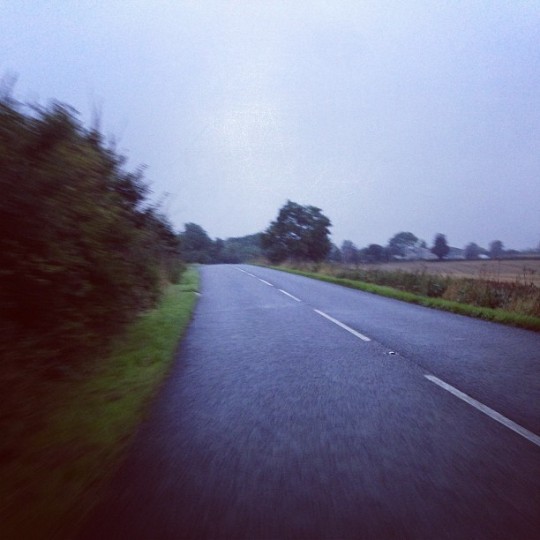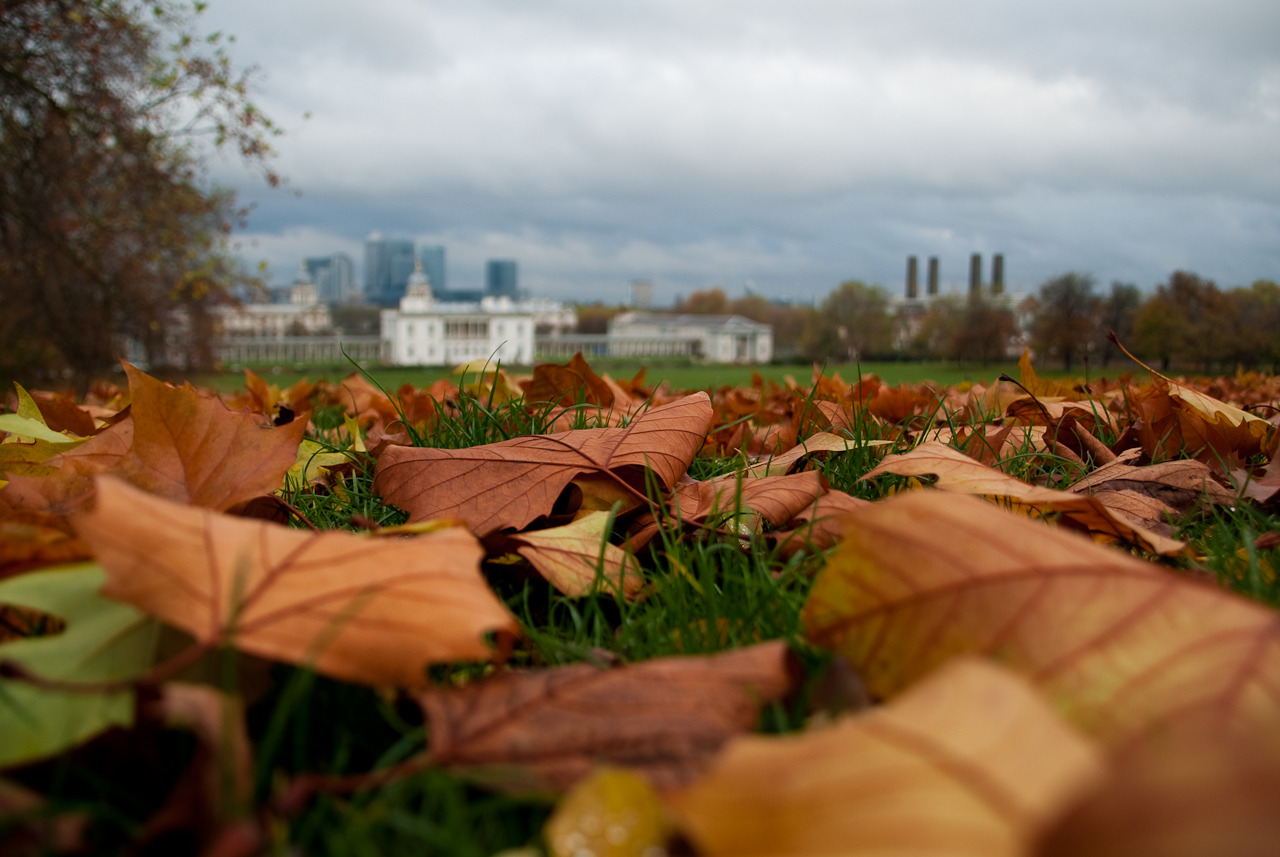anthony galvin
TAGGED: AUTUMN

A late autumn day, and despite the bright sun, the temperature is only a few degrees above freezing. A day for full winter cycling kit. Belgian style merino hat, long bib tights, windstopper jacket. It's a Monday and I've got a few hours free. Plodding along the quiet back roads that zig-zag across this part of Northamptonshire. Single track in places. Almost car free, except for some farm traffic.
I'm not going far, just looping through local villages. They are places I know well, but usually by car and as always you see a different place on the bike. The hills seem steeper (of course) and the red-brown fields on the other side of the hedgerows look heavy. Waterlogged and uninviting.
The rain gets heavier. It's time to head for home, luckily I'm not more than a few miles away from a warm shower and hot drink. I get my head down, peddling in the small ring, almost home.
12/11/2019 permalink

What is the countryside for.
It’s a question that’s increasingly discussed, often in light of factory farming, wind farms, fracking or the housing policy.
But it’s not just a directly economic asset. It’s also an escape route. After a genuinely difficult week for our family, we struck out on our usual short loop around the patchwork of fields and pathways that surround the village.
This isn’t picture postcard England. The sights on our circuit incorporate the village football pitches, a couple of light industrial units, a view of Milton Keynes in the distance, some former clay pits (“the bomb hole”) and on Saturday the joy of a red kite soaring over the fields and a clear light that shone some brightness back into our family life.
The countryside is ‘for’ lots of things - but not all of them are easily measured in pounds or acres.
2014-10-27 09:47:23 GMT permalink

Commute.
A dash for the train. Greens and brown blurred as the pedals spin and breathing hurries. The fields have a haze of green, early shoots of growth, wet with a misty rain. A pheasant fails to hide against this baize, an obvious shot, ready to be potted.
Into the effort now. Traffic grows; plumber, Golf, Audi, school bus. Past the two small woodlands, then down and over the little bridge, and up the bailey to skirt the embankment and into a village now fortified by roads and starter homes.
Down into the town, that welcomes careful drivers, though it does a poor job of attracting them, to make the train. Now I’m the one glistening with a morning dew.
The train pulls away, South. From the carriage window a kestrel hovers, already at work.
2013-10-22 16:11:00 GMT permalink

Yellow.
Further east today and somewhere new. The landscape changes as you move through the fens, the sky bigger.
A carpet of yellow.
Clear skies. Exploring.
And then back home.
Tired. Muddy.
Happy.
2012-11-17 23:29:00 GMT permalink

Autumn leaves.
The mud is heavy, claggy. A steady squelch underfoot. The three of us exploring a little woodland that my wife knows well. We are a running late and the light is fading a little already. The small glades off the main path are carpeted with bright red and orange leaves (and an amazing array of fungus).
Autumn colours in full force.
Back on the path we pick our way through the mud until we find a better path. Violet skipping along until we get back to the car just before dusk.
Hazelborough Forest, Northamptonshire
2012-11-10 21:54:00 GMT permalink
Putting the wicket to bed
It’s October. Unseasonably hot. The ‘rec’ busy with the usual early morning Sunday traffic. Tired looking fathers push energetic toddlers on the swings and dog walkers hurl mauled tennis balls vast distances with the aid of semi-prosthetic tools. The sound of the Sunday morning footballers can be heard from over the hedge that separates the cricketers 'oval’ - though in reality the cricket ground is far from a shape that can be easily described by conventional geometry - from the more rugged footy pitches on the far side of the rec.
But on this bright, late summer early autumn morning there’s a another sound; a mower is working one end of the tired looking square. On the other side a scarifier is churning away - scarring the wickets with it's metallic teeth, and tearing at the turf that is seen, by some villagers (if not the local foxes) as semi-sacred ground.
For Stewkley 1st XI the season is over, a slightly misleading name, as there’s only one team on a Saturday these days. By most measures the season has been one of mainly downs, with a second successive relegation only avoided by a rare win on the final day of the season. Next year another assault on the four counties div 3 title awaits. But that’s along way off. For now there’s some work to be done, putting the wicket to bed.
A group of men are trying to coax the ancient petrol mower back to life. It’s shed some critical bolt into the grass box, a grass box which has already been emptied into a huge pile of cuttings on the far side of the boundary. There’s much cursing and encouragement as the 'old girl’ is primed and the hand start is repeatedly ripped with huge effort and little success. A quirk of the device is that each 'start’, false or otherwise, requires the entire starting mechanism to be rebuilt by hand. A process that seems to take an eternity. Eventually there’s a rumbling cough and the green goddess sparks into life and trundles off down the wicket. Despite her age and infirmity, the cut of the whirling blades is neat and efficient.
The square hasn’t seen many big score this year. Often a little 'green’ and far from flat (the ordinance survey could run a training course identifying all the ridges that run over the 12 or so strips)), visiting teams know that anything over 150 is going to be a potentially winning score. Teams who reach 3 figures batting first always fancy their chances. Especially if there’s been some overnight rain (there are no covers) or it’s a cloudy atmospheric day. This isn’t a ground for the batting purist, but for the 'grafting’ batsmen who plays the ball as late as possible.
Yet it isn’t the worst wicket in the league and the 'rec’ certainly isn’t a bad place to play your cricket. On a good Saturday the benches and chairs by the squat brick pavilion are filled with spectators, never short of encouragement and, sometimes direct advice. Surrounded by trees - with a couple encroaching within the boundary at the far end (only 4 runs should you clip one of those with a lofted drive) and sitting on the edge of the village, it’s a sometime bucolic scene. The (inattentive) fielder can watch buzzards and red kites hunt in the adjacent fields and tractors buzz along the Soulbury Road, a short hit over the boundary.
Today though there are no spectators or men in white. Instead on the edge of the 'artificial’ there’s a large pile of top soil and a bag of grass seed being mixed up, ready to top dress the square. Perhaps as an offering to the cricketing deities for more runs next year - and certainly for more consistent bounce. Though perhaps some of the bowlers are less sincere in their devotions. Wickets seem easier to come by when you don’t know if the batsmen is unsure if a length ball will shoot onto his the toe or rear up to under his nose.
The mower falls silent again, and whilst a committee of elders try and formulate a plan for one more start the younger members of the work party begin an impromptu game on the edge of the cut strips. A old tennis ball is found and a broken shovel commandeered for a bat. There’s some edgy drives, the weight of the blade and the post season rustiness combining to give catching practice to the close circle of fielders. The old machine is back in action and the game breaks up to scatter the soil, seed and odd stone over the freshly manicured ground.
And then it’s done. The rope is up around the table, suspended strangely at head height from metal poles - a test for for those wending their way home across the 'rec’ from a late night session in The Swan. There’s time for a quick beer in the pavilion bar, the last one of the cricketing year and then it’s done. The wicket has been put to bed. The season is over. Until the next one.
2011-10-24 12:32:00 GMT permalink

So it feels like summer is over. The cricket season has come to an end, rain and wind harry across the hills of north Bucks and the nights are drawing in. It has been a great summer, culminating (for us) in our wedding. But it feels like autumn is an exciting time, a beginning. Of what I’m not sure, but there’s bound to be some digging in at the allotment, more changes round the house and hopefully the planning of a jaunt to Norway. The harvest is in, time to plan the next one I suppose.
2011-09-20 22:15:00 GMT permalink











































































